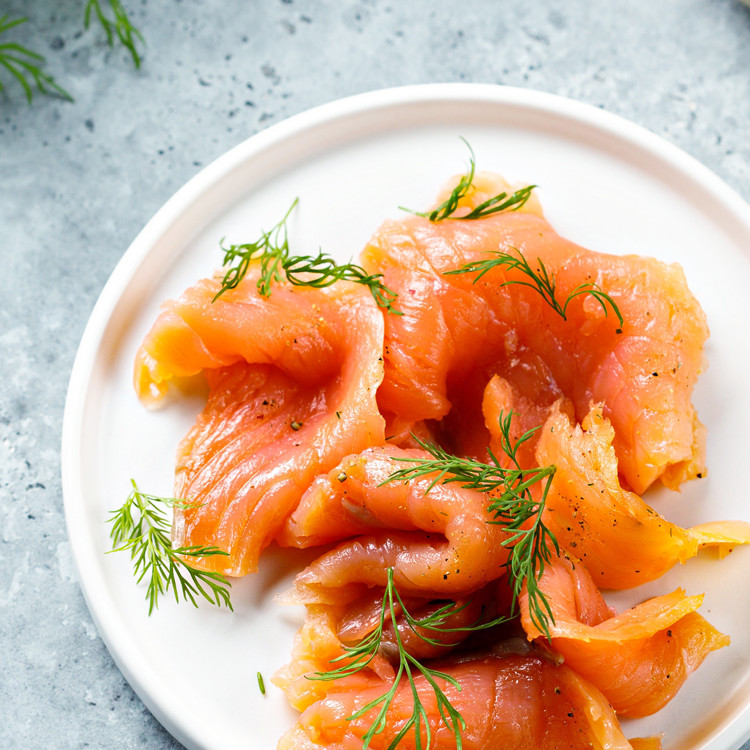
Delicious Norwegian Salmon (How to Make Gravlax)
Learn all about Norwegian Salmon and how to prepare this traditional recipe for Norwegian Salmon Gravlax.
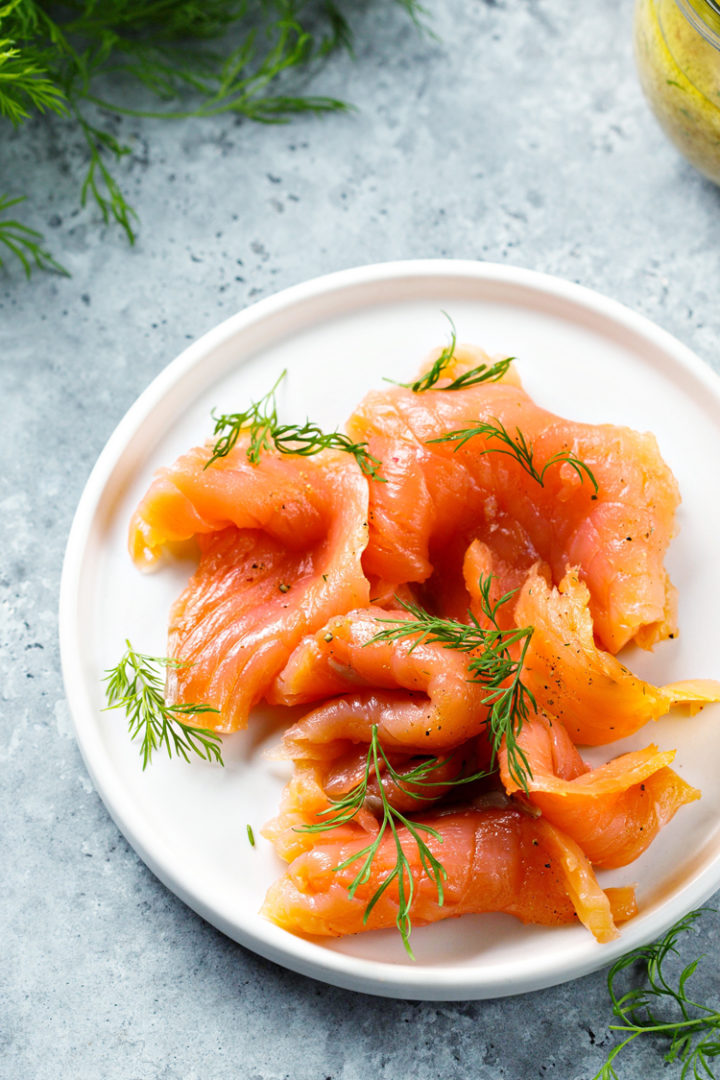
This post brought to you by Norwegian Salmon. I was compensated for my time, but opinions are 100% mine.
Making this Norwegian Salmon Recipe
Every year I tell myself that I need to incorporate more healthy seafood into our family’s diet. I’ve always admired my mother-in-law’s meal planning abilities, especially when it comes to incorporating a variety of protein sources throughout the week.
For as long as I’ve known her, she’s kept a calendar on the fridge with the weekly meals labeled on each day. She is careful to serve fish or other seafood at least once a week in her menu planning – something I aspire to as most of us know how beneficial marine omega-3 fatty acids are for our bodies.
I didn’t really grow up eating seafood – unless you count canned tuna fish, fish sticks, or the occasional grilled catfish.
If anyone asked me what particular food I find intimidating in the kitchen, my answer would be seafood. There’s a reason that the seafood section of the Good Life Eats recipe index features so few recipes.
The unfortunate truth is, I just don’t know a lot about seafood. However, that doesn’t mean I don’t want to learn more.
I wanted to take a moment to share with you some of what I’ve learned about seafood from the Norwegian Seafood Council, particularly about Norwegian Salmon ocean-farmed in the icy, cold waters of Norway.
Norwegian Salmon Industry
The artic waters of Norway have shaped and sustained the seafaring population for generations.
As pioneers in the development of ocean salmon farming in the early 1970’s, Norway’s passion for the sea and respect for nature have given them an international reputation for some of the finest, fresh seafood. The Norwegian’s have found that the cold water of the Norwegian ocean produce high-quality ocean-farmed salmon.
The first twelve months of an ocean-farmed salmon from Norway is spent safely in a hatchery tank on land until they become strong enough for life in the ocean. Once large and strong enough to grow at sea, the salmon are transferred into a spacious, protected ocean pen. These pens are large and allow maximum freedom to grow.
Not only is Norway currently one of the world’s largest suppliers of seafood, they hold unsurpassed standards of excellence in the form of rigorous safety measures used to raise their ocean-farmed salmon.
Strict Safety Standards of Norway Salmon Farms
Norwegian’s high esteem for nature and deep cultural pride lend themselves to continued efforts to advance their already strict ocean-farmed salmon safety standards. Their goal is to promise fresh, delicately flavored salmon from Norway that consumers can enjoy year round.
“The analogy I would give is that farmers in Norway are treating their salmon the way our organic farmers in the U.S. treat their farms,” said Ashley Koff, R.D., M.S., on a Good Morning America Health Segment.
Norwegian law prevents overcrowding by requiring that salmon make up less than 2.5 perfect of an aquaculture facility’s volume. What does that mean? Each facility is comprised of 97.5 perfect water. Norway clearly wants to ensure maximum comfort and quality growth of their fish.
The salmon’s development is closely monitored by advanced technology. These monitors keep the farmers and vets updated on every aspect of the salmon’s life, including when the fish are full so the feeding device can be shut down.
Norwegian Salmon Farmers
Aino Olaisen became involved in Norway’s ocean-farmed salmon culture at an early age. Aino’s father saw ocean-farmed salmon as a means to reverse Lovund’s trend towards depopulation and depression during the early 1970’s.
Early on, Aino worked the family business. Summers were spent working on the farm. By age 16, Aino left her hometown of Lovund to further her education in fishery. She later attended the NorwegianCollegeof Fishery Science in Tromso.
15 years were spent studying and traveling various regions before she returned home to start her own family and continue with the business her father founded. Aino is now the owner of Nova SeaAS, which was established by her father Steinar in 1972.
“We eat salmon for dinner at least once a week, and we often enjoy smoked salmon for breakfast and lunch,” she says. “My favorite way to serve it is to oven bake a salmon fillets in aluminum foil after sprinkling it with soy sauce, herbs, fresh chili, fresh ginger and a few drops of freshly squeezed lime. My family loves it served with fresh vegetables.”
What is Norwegian Gravlax?
Gravlax is one of Norway’s most distinctive dishes. Gravlax, literally translating to “Grave-Salmon,” refers to the medieval practice of curing the raw fish by burying it in the sand above the high tide level.
Today, however, a fresh, delicate flavor is achieved by curing Norwegian Salmon Fillet with salt, sugar, and dill. This modern interpretation of this Norwegian dish is traditionally eaten on open-faced sandwiches or with stewed potatoes.
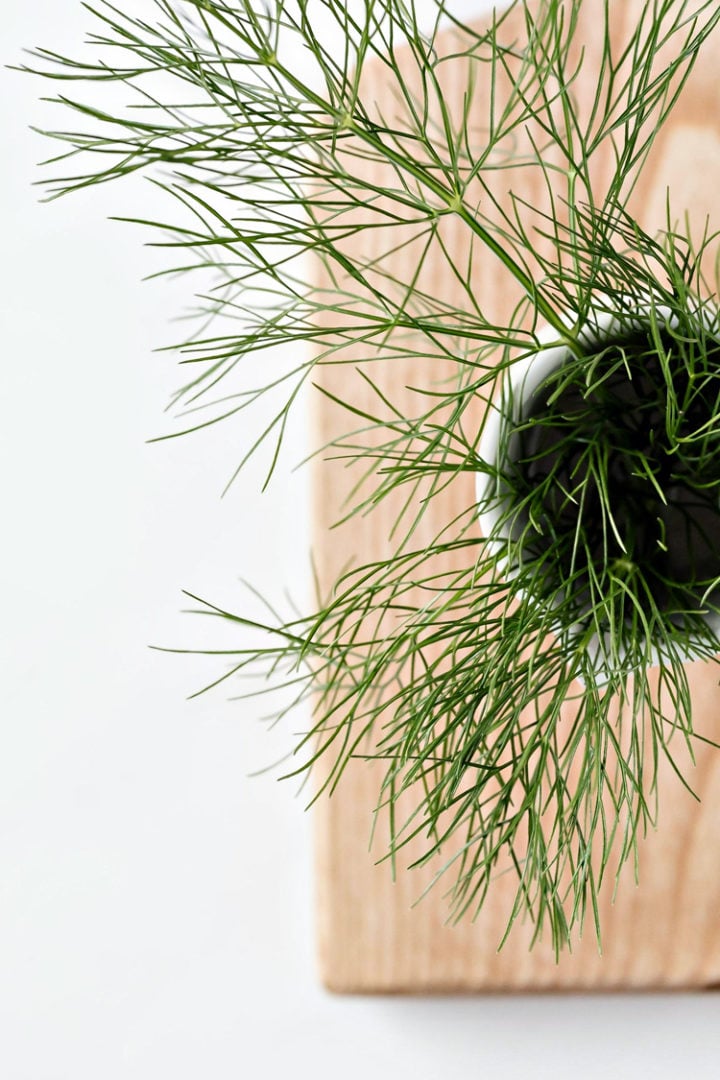
What is in this Norwegian Salmon Recipe?
For the Salmon:
- Salmon
- Salt
- Sugar
- Black Pepper
- Fresh Dill
For the Gravlax Sauce:
- Egg Yolks
- Dalt
- Olive Oil
- Sugar
- White Wine Vinegar
- White Pepper
- Mustard
- Fresh Dill
For the complete ingredient list and detailed instructions, scroll to the bottom of this post for the FREE printable recipe card.
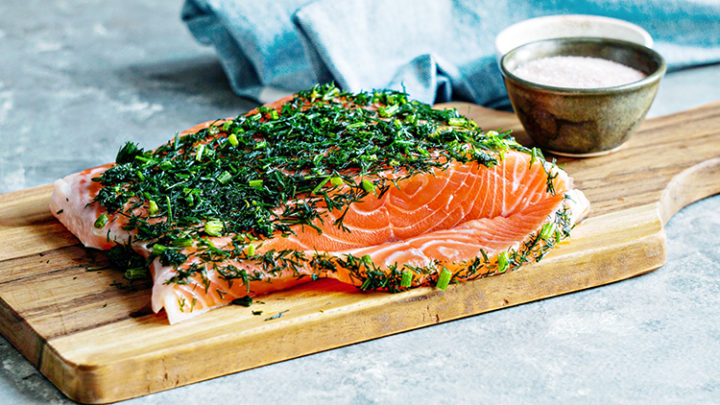
How to Make Traditional Norwegian Salmon
First, you’ll need to trim the salmon filets and remove bones. Then, combine the salt, sugar, pepper, and dill. Place half the salt mixture in the bottom of a pan and the other half on top of the salmon.
After that, place the salmon (skin side down) in the roasting pan. Tightly wrap the pan with plastic wrap and transfer it to the fridge to cure. The salmon then needs to cure in the refrigerator for 3-4 days and turned every day.
How to Make Gravlax Sauce:
Combine the salt, egg yolk, and slowly add in the oil while whisking. Then, stir in the sugar vinegar, pepper, mustard, and dill. Set the sauce aside.
Then, you’ll remove the curing seasonings and cut the salmon into thin slices. After that, you’re ready to serve your Norwegian Salmon with the Gravlax Sauce in a small bowl!
The above is simply a quick summary of this recipe. Check out the full recipe in the free printable recipe card at the bottom of this post for all the detailed instructions.
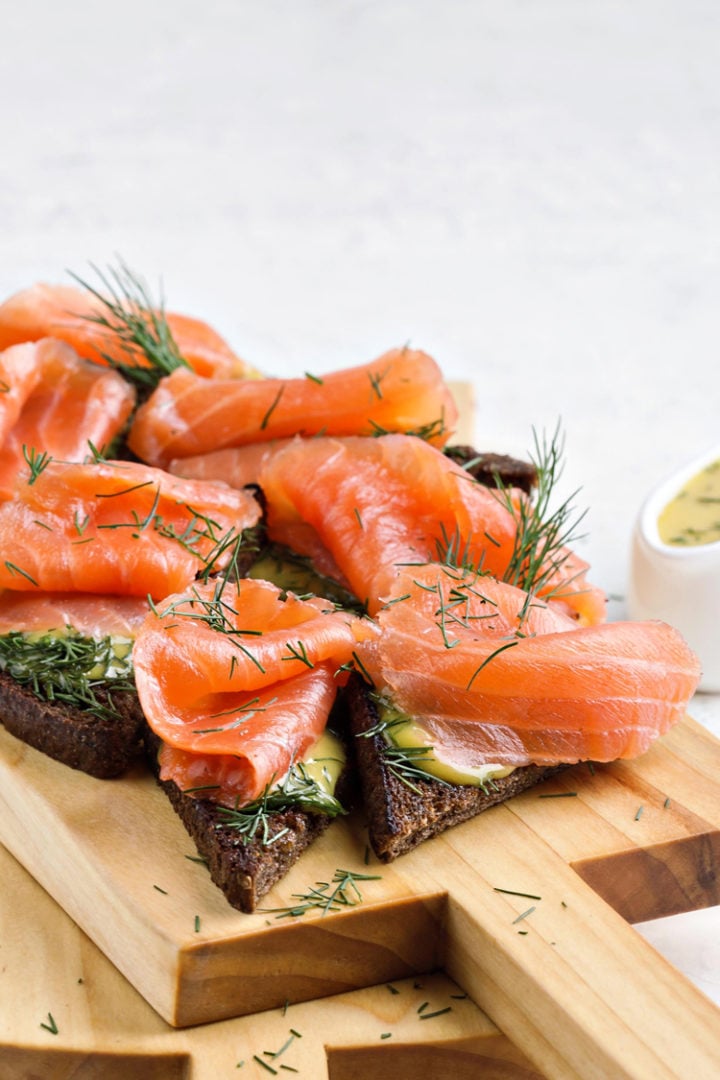
What to Serve with Norwegian Salmon
It is traditional to serve this Norwegian Salmon Gravlax with stewed potatoes and gravy.
The thinly sliced salmon also makes a great appetizer when served at a party. Try serving it along side crackers or crostini toasts with the gravlax sauce and sprigs of fresh dill for garnish.
Have you ever made Norwegian Salmon?
Stay Inspired in the Kitchen!
Want more delicious recipes, kitchen tips, and meal inspiration? Sign up for the Good Life Eats Newsletter and get:
✔ Tried-and-true recipes—from quick weeknight meals to special occasion favorites.
✔ Seasonal meal ideas—helping you make the most of fresh, in-season ingredients.
✔ Time-saving kitchen tips—boosting your confidence and creativity in the kitchen.
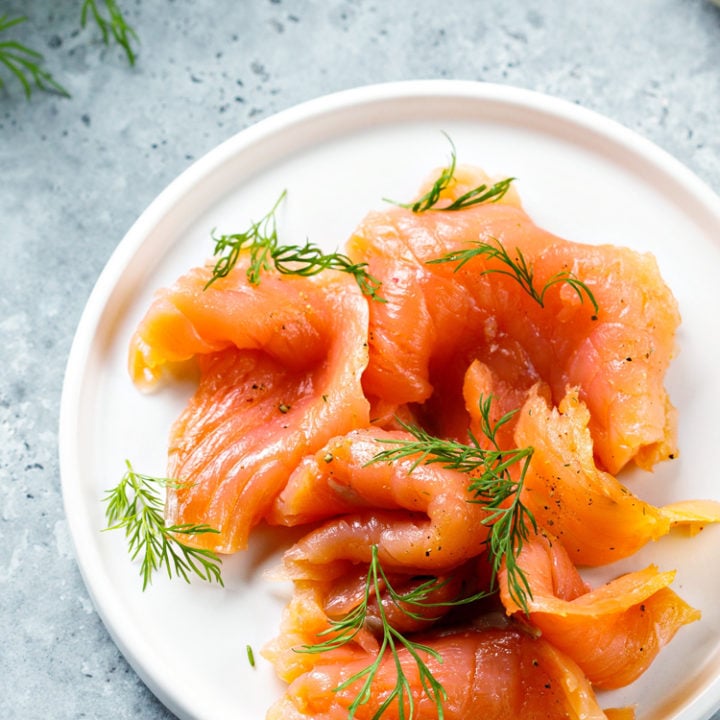
Norwegian Salmon Gravlax
Learn all about Norwegian Salmon and how to prepare this traditional recipe for Norwegian Salmon Gravlax.
Ingredients
For the Norwegian Salmon:
- 1 approximately 2 pound salmon fillet, skin on
- 3 tablespoon salt
- 2 tablespoon sugar
- 1 tablespoon coarsely ground pepper
- 1 bunch dill, coarsely chopped
For the Gravlax Sauce:
- 4 egg yolks
- 1/2 teaspoon salt
- 1/2 cup vegetable oil or mild olive oil
- 1 tablespoon sugar
- 1 tablespoon white wine vinegar
- 1/2 teaspoon white pepper
- 1 tablespoon mustard
- 2-3 tablespoon finely chopped dill
Instructions
For the Norwegian Salmon:
- Trim salmon fillets. Scrape the skin well and remove all bones (if any).
- Blend salt, sugar, and pepper. Sprinkle half of the salt mixture in the bottom of a roasting pan, then sprinkle half of the dill over and place the fillet in the pan skin side down.
- Gently press the remaining salt mixture and dill on the flesh side of the fillet.
- Refrigerate fish for 3-4 days. Turn it every day.
- Scrape seasoning and dill from the fillets before serving.
For the Gravlax Sauce:
- Add salt to the egg yolks and stir until it reaches a thick consistency. Slowly pour in the oil while whisking quickly until the sauce is a consistency similar to mayonnaise.
- Stir sugar, vinegar, pepper and mustard into the sauce. Just before use add the dill. The sauce will keep in the refrigerator for up to 1 week.
- Cut the salmon into thin slices and serve with gravy, stewed potatoes or bread and salad.
Notes
It is traditional to serve this Norwegian Salmon Gravlax with stewed potatoes and gravy.
The thinly sliced salmon also makes a great appetizer when served at a party. Try serving it along side crackers or crostini toasts with the gravlax sauce and sprigs of fresh dill for garnish.
Recommended Products
As an Amazon Associate and member of other affiliate programs, I earn from qualifying purchases.
Nutrition Information:
Yield: 8 Serving Size: 1Amount Per Serving: Calories: 419Total Fat: 32gSaturated Fat: 5gTrans Fat: 0gUnsaturated Fat: 25gCholesterol: 164mgSodium: 2606mgCarbohydrates: 6gFiber: 0gSugar: 5gProtein: 27g
GoodLifeEats.com offers recipe nutritional information as a courtesy and is an estimate only. This information comes from online calculators. Although GoodLifeEats.com makes every effort to provide accurate information, these figures are only estimates.

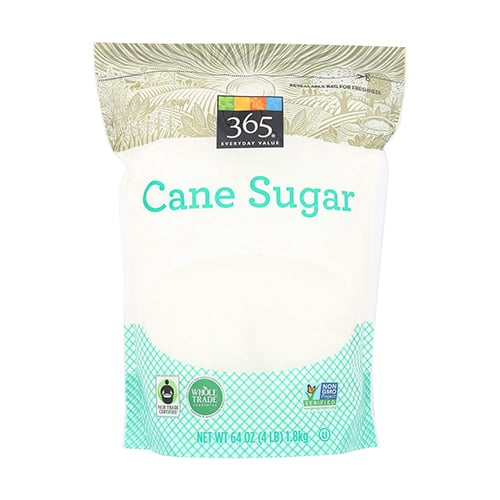
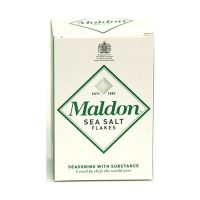
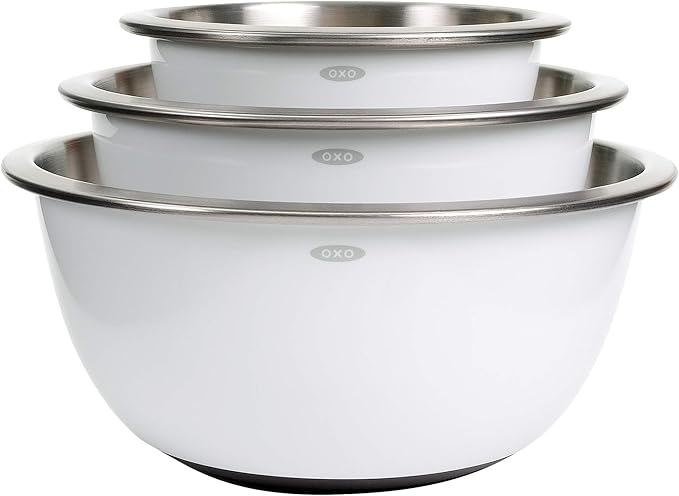
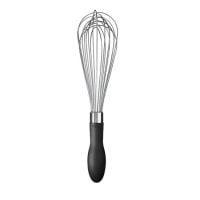
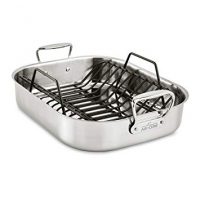

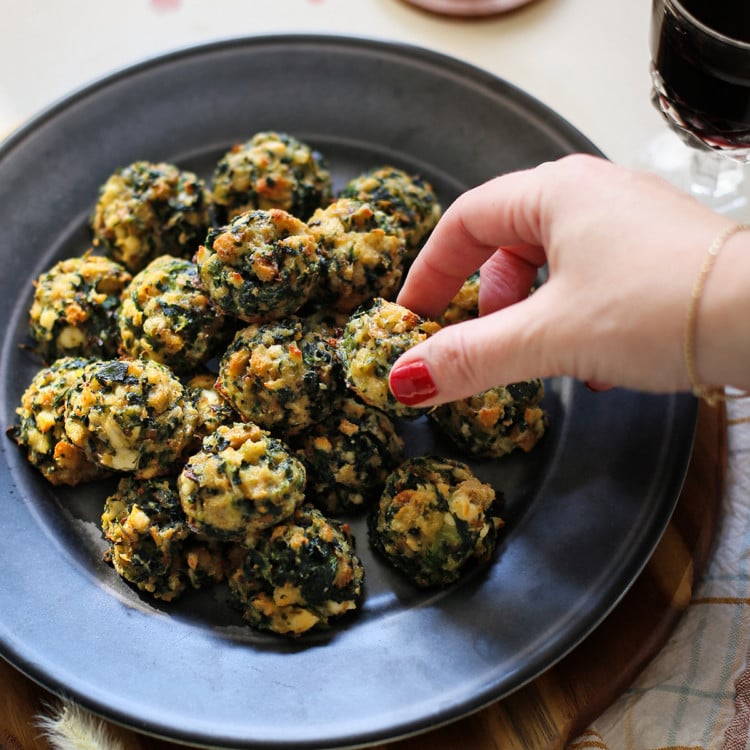
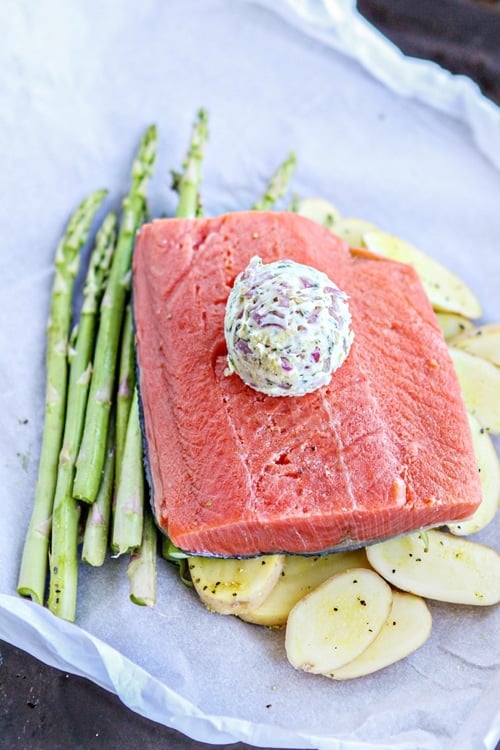
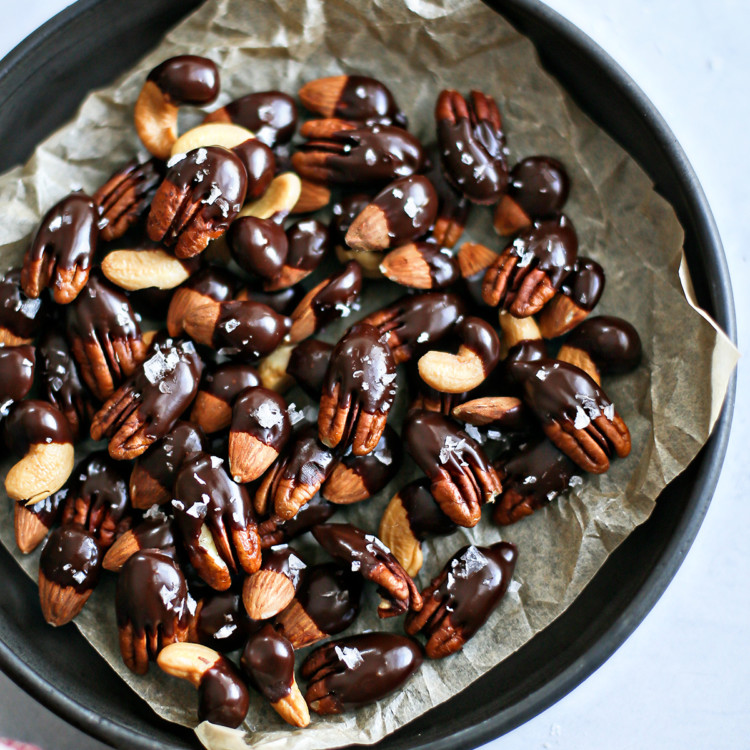
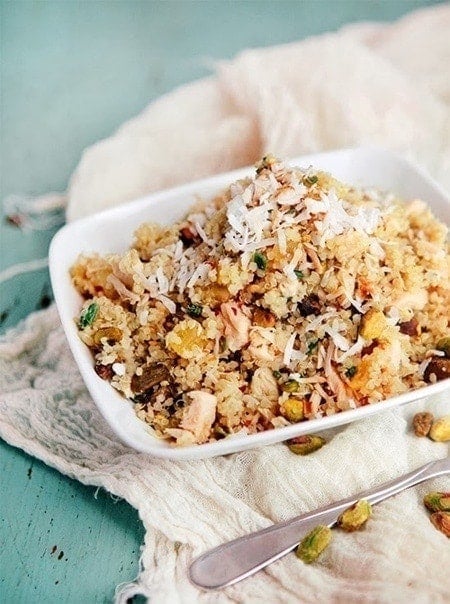
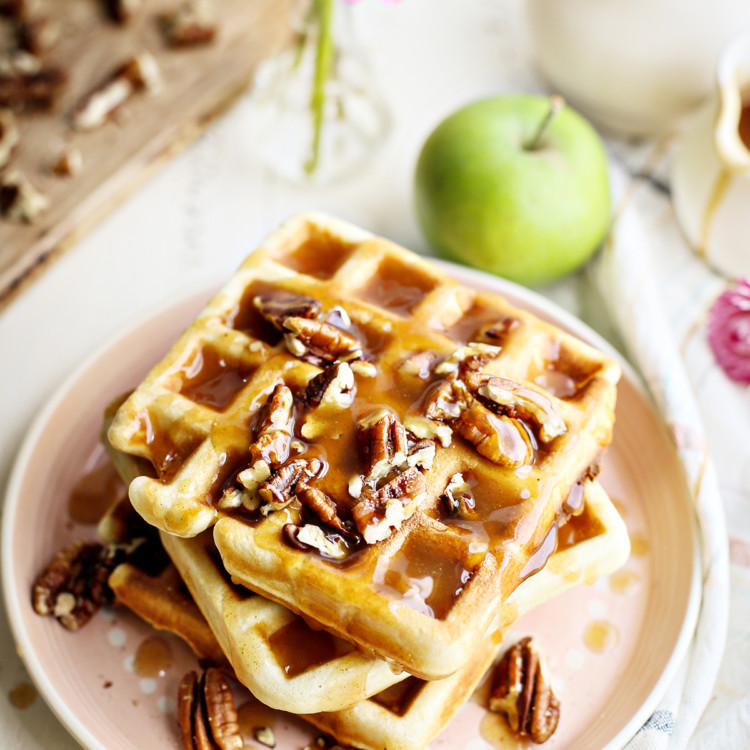
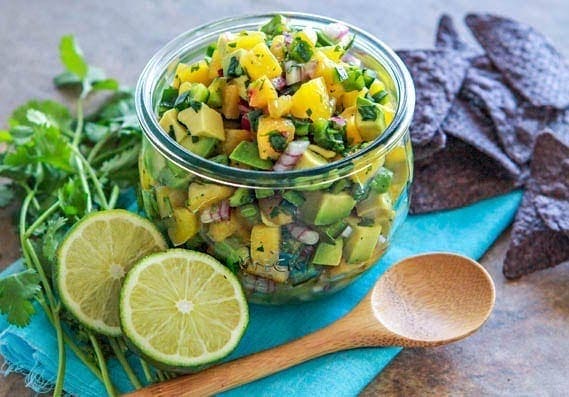
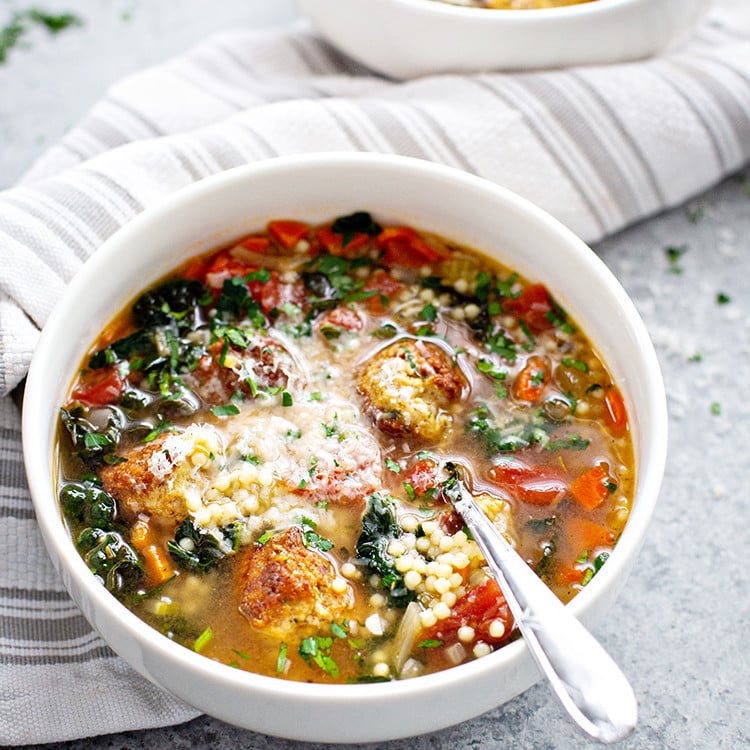
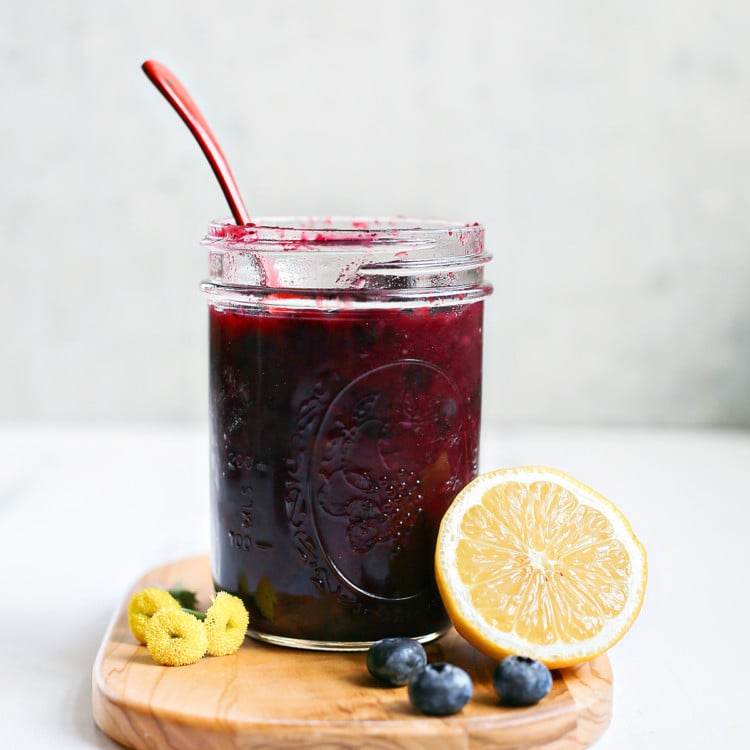
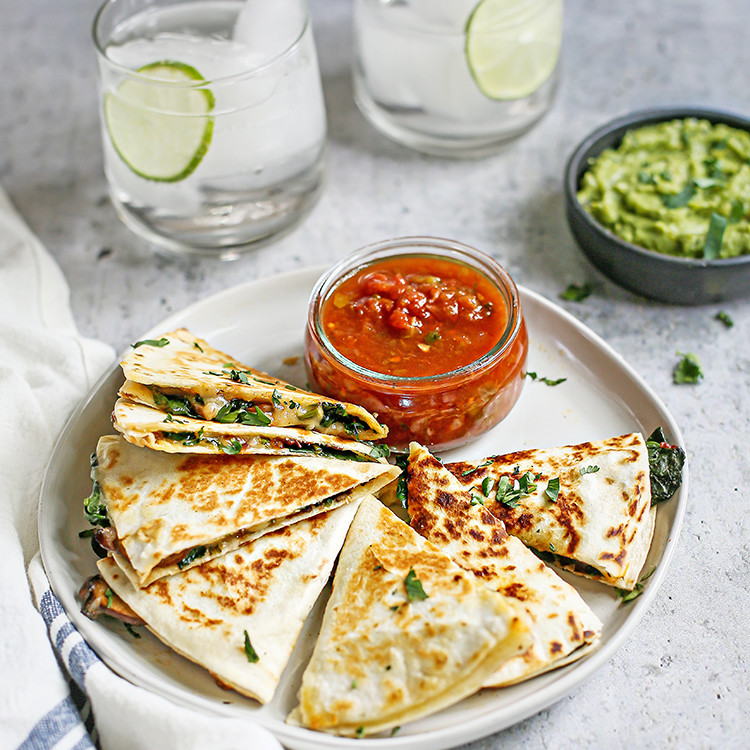

Grace says
Thank you for the recipe I am going to try it this coming weekend
Louisa [Living Lou] says
Salmon is one of my favourite proteins to cook with. I find that it’s as good of a base, if not better, than chicken. It can be prepared so many ways, and it’s so easy, not to mention all the health benefits – as you mentioned, omegas 3s! I have seven recipes on Living Lou if you’re looking for any ideas 🙂
Marion says
What a beautiful salmon! But in Norway cured salmon is written as ”gravlaks”; ”lax” is Swedish 🙂
annabelle for KimberlyBelle says
Thank you for sharing this information on Norwegian salmon farming. I’ve been planning to prepare gravlax for an upcoming cocktail party — what would you suggest pairing this with? Something with gin, perhaps?
Nate @ House of Annie says
We use wild-caught salmon to make Hawaiian-style lomi lomi salmon:
http://www.houseofannie.com/lomi-lomi-salmon/
Casey@Good. Food. Stories. says
Cold-smoked, cured, or raw – I love salmon the most when it’s not affected too much by heat. Gimme gimme gravlax!
Kristen says
I would share a link but my stinkin’ blog is down, again. Cedar Plank – covered in garlic or brown sugar. Yum!
Tracy says
Great information in this post Katie! We love salmon, although I agree that it can be a bit intimidating…we usually stick to the same two ways of cooking it; either baked with herbs and lemon or grilled during the summer. I’d love to try your recipe!
Delishhh says
Great post, lots of good info – being Swedish i make gravlax all the time one of the things that I do and was thoght early on is that you should really wrap the salmon tight in plastic wrap and put something heavy on the fish it helps with the marinade. Also marinade both sides. I am curious how your turned out in the pan without being wrapped – was it soupy? Since all of the juices comes out i am wondering if the seasoning/marinde came off.
Amber | Bluebonnets & Brownies says
Confession: I’ve never eaten Salmon. Growing up, we were just not a fish eating family. Other seafood like crab, shrimp, and lobster, for sure. But never fish.
I’ve wanted to change that for years. This recipe looks very tempting to me. Maybe it could be the one to bring us over to the fishy side!
Amanda says
Fascinating!! These pictures are amazing… and I love the goals of the salmon farms tin Norway!
Sylvie @ Gourmande in the Kitchen says
Thanks for such an informative post, it’s great to get a look into Norwegian salmon farming methods and to know what care they take.
Shaina says
I’ve heard good things about the Norwegian sustainable farming methods for salmon. Very cool to see a deeper look into it. Plus, we love gravlax.
Allison says
I so needed this post! I love to eat salmon, but have no idea how to cook it so I never buy it. This recipe looks delicious – can’t wait to try.
Aimee @ Simple Bites says
What gorgeous color on that fish! Thanks for an informative post, Katie. I actually adore gravlax and smoked salmon, although I can’t eat it now when I’m pregnant.
I’m lucky in that my kids are crazy about salmon. I like to pan roast the filets and brush them with a glaze of apricot jam, soy sauce and fresh grated ginger. Easy and delicious!
Jamie | My Baking Addiction says
We don’t eat nearly enough fish – honestly, it’s the one thing that intimidates me in the kitchen. This recipe sounds quite lovely.